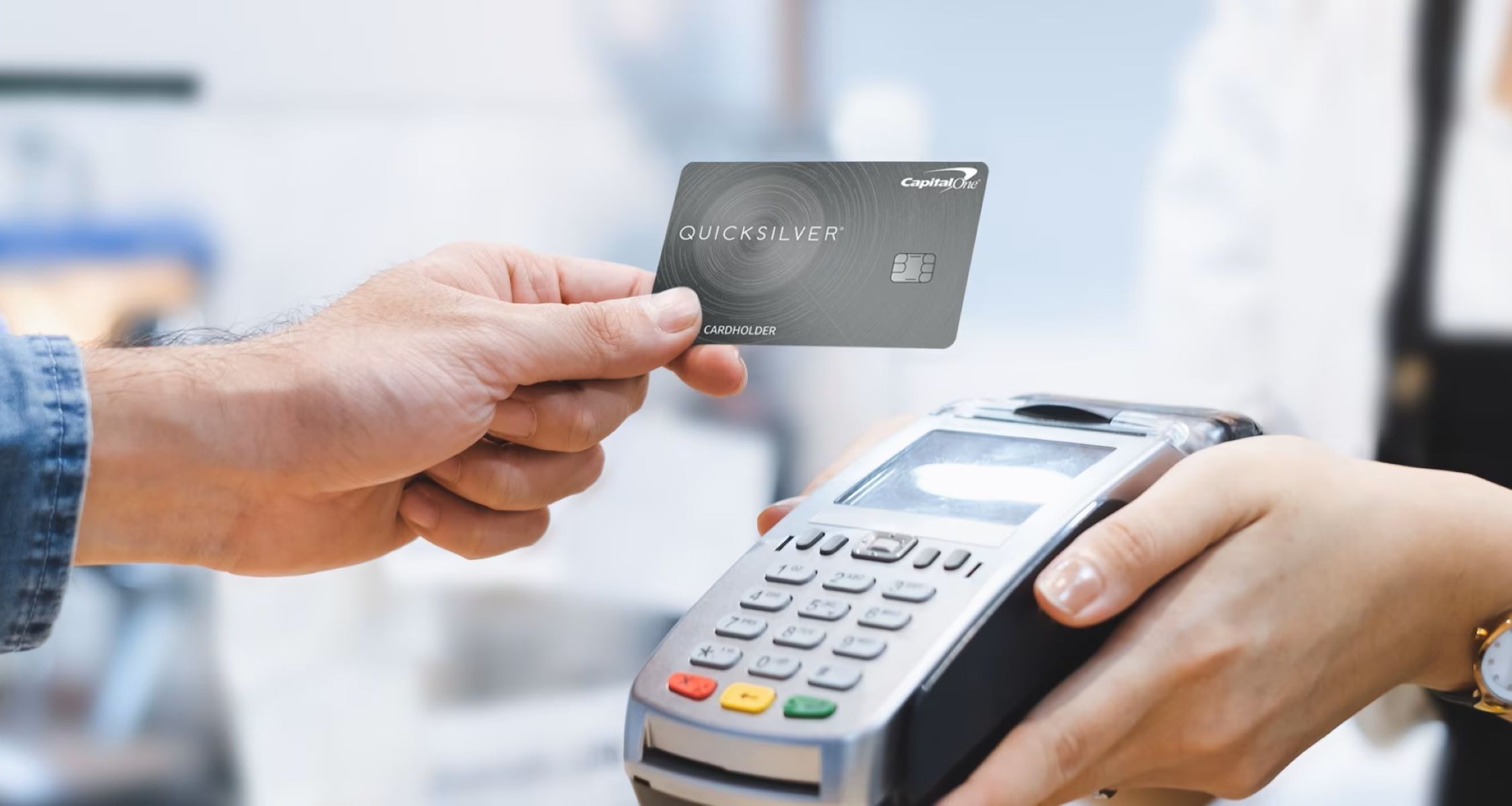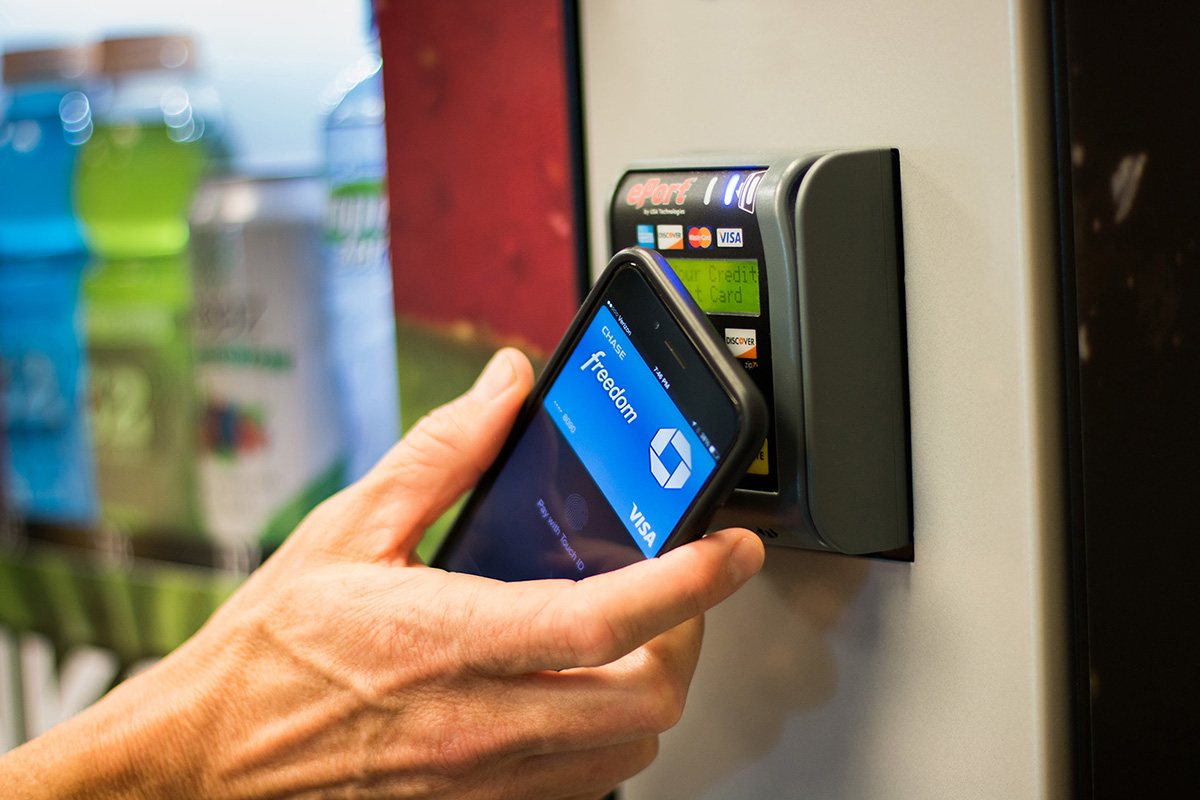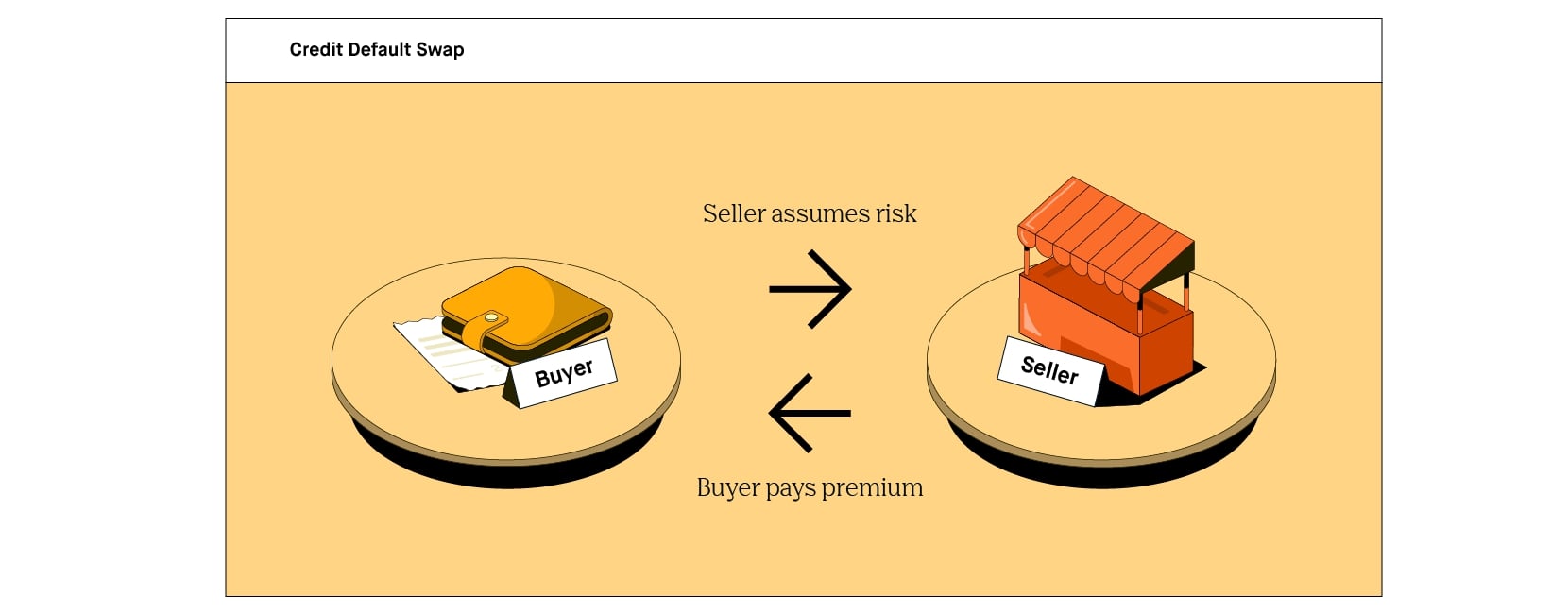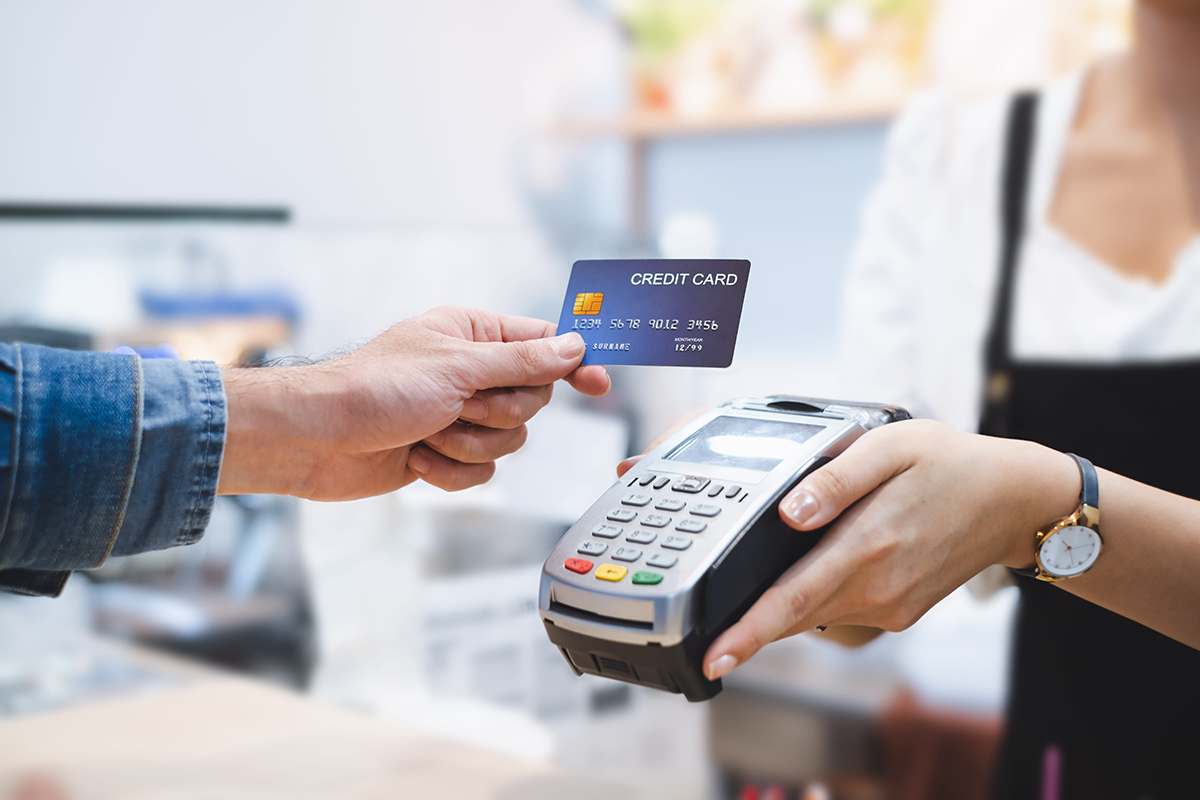

Finance
How Do Credit Card Swipers Work
Published: October 27, 2023
Discover how credit card swipers work and the impact they have on the world of finance.
(Many of the links in this article redirect to a specific reviewed product. Your purchase of these products through affiliate links helps to generate commission for LiveWell, at no extra cost. Learn more)
Table of Contents
Introduction
Welcome to the world of credit card payment processing! You’ve probably used a credit card to make countless purchases, but have you ever wondered how those sleek little plastic cards magically transfer funds from your bank account to the merchant’s? It’s all thanks to the wonder of credit card swipers.
Whether you’ve encountered them at a retail store, a restaurant, or even at a small business fair, credit card swipers are the unsung heroes of financial transactions. With just a simple swipe, these devices process your payment information, authorize the transaction, and facilitate the transfer of funds securely and efficiently.
In this article, we’ll delve into the inner workings of credit card swipers and unveil the technology behind their seamless operation. We’ll explore how magnetic stripe technology enables swiping, the intricacies of the data encryption process, and the authorization steps that take place behind the scenes.
Additionally, we’ll touch on the benefits and limitations of credit card swipers, as well as the emerging technology of contactless payments that is changing the game. So, let’s dive in and get to know how these little devices make our financial lives so much easier.
Magnetic Stripe Technology
At the heart of every credit card swiper lies the magnetic stripe, which is a tiny piece of magnetic tape embedded on the back of the card. This stripe contains essential information, including the cardholder’s name, account number, and expiration date, all encoded using magnetic particles.
The magnetic stripe technology, also known as magstripe, makes use of a series of magnetic charges that are arranged in tracks. These tracks, usually three in number, are built into the stripe and can store a significant amount of data. Track 1 and Track 2 are the most common tracks used for credit card transactions.
Track 1 includes the cardholder’s name, account number, and other additional information. Track 2, on the other hand, contains the cardholder’s account number, expiration date, and other necessary details. When a credit card is swiped, the credit card swiper uses a magnetic reader head to detect and read the magnetic charges on the stripe, extracting the encoded information from the appropriate tracks.
While magnetic stripe technology was revolutionary when it was first introduced over half a century ago, it has become susceptible to fraud and security breaches due to its inherent vulnerabilities. The information stored on the magnetic stripe is static and can be easily copied or tampered with, making it a desirable target for cybercriminals.
As a result, there has been a shift towards more secure methods of payment processing, such as EMV chip cards and contactless payments. However, magnetic stripe technology is still widely used, especially in countries where the transition to newer technologies has been slower.
How Swiping Works
Have you ever wondered what happens when you swipe your credit card through a card reader? Let’s demystify the process and take a closer look at how swiping works.
When you swipe your credit card, the magnetic reader head within the card reader comes into contact with the magnetic stripe on the back of your card. The reader head then detects and reads the magnetic charges on the stripe, extracting the encoded information stored in the appropriate tracks.
Once the information is read, it is sent to the payment processor through a secure connection. The payment processor acts as the middleman between the merchant’s bank and the cardholder’s bank, facilitating the authorization and transfer of funds.
The payment processor verifies the authenticity of the card and the availability of sufficient funds by sending a request to the cardholder’s bank. This request includes the card information, transaction amount, and other relevant details. The cardholder’s bank then processes the request and either approves or declines the transaction.
If the transaction is approved, the payment processor sends an authorization code back to the card reader, indicating that the payment has been approved. The card reader then generates a receipt for the cardholder and completes the transaction.
It’s important to note that the entire process, from swiping the card to receiving the authorization, typically takes just a few seconds. This seamless and efficient procedure allows for quick and convenient transactions, making credit card swipers a popular choice for businesses of all sizes.
It’s worth mentioning that the process may vary slightly depending on the type of credit card swiper being used. Some swipers may require the cardholder to enter a PIN or sign a receipt as an additional security measure. However, the fundamental concept of reading the magnetic stripe and authorizing the transaction remains the same.
Data Encryption
Ensuring the security of sensitive financial information is of utmost importance in the world of credit card swipers. To protect cardholders from fraud and identity theft, strong data encryption techniques are employed to safeguard the information transmitted during a transaction.
When the card reader reads the information from the magnetic stripe, it is immediately encrypted. Encryption is the process of converting data into an unreadable format that can only be decrypted by authorized recipients with the appropriate decryption key.
The encrypted data is then transmitted securely to the payment processor for authorization. The payment processor then decrypts the information using their decryption key to verify the cardholder’s identity and complete the transaction.
One common encryption method used in credit card swipers is the Triple Data Encryption Standard (Triple DES). Triple DES encrypts the data three times using a 56-bit key, providing a high level of security. This ensures that even if an unauthorized party intercepts the data during transmission, it is nearly impossible for them to decipher the original information.
Another widely adopted encryption standard is the Advanced Encryption Standard (AES), which provides even stronger security. AES uses symmetric encryption, meaning the same key is used for both encryption and decryption, and offers options for 128-bit, 192-bit, and 256-bit key lengths.
Additionally, measures such as Secure Sockets Layer (SSL) or Transport Layer Security (TLS) protocols are implemented to establish secure connections between the card reader, payment processor, and all related parties involved in the transaction. These protocols use encryption algorithms to protect the data while it is in transit.
Data encryption plays a crucial role in protecting cardholders’ sensitive information from unauthorized access and potential misuse. It ensures the confidentiality and integrity of the data throughout the entire payment process, making credit card swipers a trusted and secure method of payment.
Authorization Process
Once the encrypted payment information reaches the payment processor, the authorization process begins. This crucial step verifies the authenticity of the card, checks the account balance, and ensures that there are sufficient funds to complete the transaction.
The payment processor sends a request to the cardholder’s bank, also known as the issuing bank, to obtain authorization. This request includes critical information such as the cardholder’s account number, transaction amount, merchant identification, and a unique transaction identifier.
The issuing bank receives the authorization request and performs a series of checks and verifications. It verifies the cardholder’s identity, checks for any suspicious activities or fraud alerts associated with the account, and ensures that the account has not exceeded its credit limit.
If the issuing bank approves the transaction, it generates an authorization code, indicating that there are sufficient funds and the transaction can proceed. This authorization code is sent back to the payment processor, which then communicates it to the card reader.
The card reader receives the authorization code and completes the transaction, generating a receipt for the cardholder as confirmation of the successful payment. The funds are then transferred from the cardholder’s account to the merchant’s account.
It’s important to note that the authorization process typically occurs in a matter of seconds, thanks to the advanced communication networks and technology infrastructure that support credit card payments.
In case the authorization is declined, the merchant will usually inform the cardholder that the transaction has been unsuccessful. The decline could be due to various reasons such as insufficient funds, a suspected fraudulent transaction, or an issue with the card itself. The cardholder may have the option to try another payment method or contact their bank to resolve any issues.
The authorization process is a critical part of credit card transactions, ensuring that only valid transactions are approved and the risk of fraudulent or unauthorized activity is minimized. This secure and efficient process enables cardholders to make purchases with confidence and provides merchants with reassurance that they will receive payment for their goods and services.
Benefits and Limitations
Credit card swipers offer numerous benefits for both consumers and merchants, making them a popular choice in the world of payment processing. However, they also come with certain limitations that need to be considered. Let’s explore both sides of the coin.
Benefits
- Convenience: Credit card swipers provide a convenient and efficient way for consumers to make purchases. With just a simple swipe, transactions can be processed quickly, saving time for both customers and merchants.
- Widely Accepted: Credit cards are widely accepted, making them a preferred method of payment for consumers. This acceptance allows customers to make purchases at various establishments, from retail stores to online shops and everything in between.
- Security Measures: Credit card swipers employ robust security measures, such as data encryption, to protect cardholders’ sensitive information. These measures help prevent fraud and ensure the confidentiality of payment details.
- Rewards and Benefits: Many credit cards offer rewards programs, cashback incentives, or other benefits to cardholders. By using a credit card swiper, consumers can take advantage of these perks and enjoy additional value from their purchases.
- Record-Keeping: Credit card transactions leave a digital trail, providing a convenient way to keep track of expenses and monitor spending habits. This makes budgeting and financial management easier for both individuals and businesses.
Limitations
- Dependency on Technology: Credit card swipers rely on technology infrastructure, including card readers, networks, and payment processors. In the event of technical issues or connectivity problems, transactions may be delayed or disrupted.
- Security Risks: While credit card swipers employ security measures, there is always a risk of data breaches and cyberattacks. Criminals may attempt to intercept and exploit sensitive information, putting cardholders at risk of identity theft or fraudulent transactions.
- Fees and Costs: Merchants typically incur fees for credit card processing, including transaction fees and other charges. These costs can add up, especially for small businesses with lower profit margins.
- Limited Acceptance: Although credit cards are widely accepted, there are still some businesses that do not support credit card payments or have minimum purchase requirements. This could limit the convenience and options for consumers.
- Potential Debt: Credit cards can tempt users to overspend and accumulate debt if not used responsibly. It’s important for individuals to manage their credit card usage and ensure they can make timely payments to avoid high interest charges and financial difficulties.
Considering these benefits and limitations, credit card swipers remain a popular and widely-used method of payment processing. With evolving technology and enhanced security measures, the benefits typically outweigh the limitations in terms of convenience, security, and financial management.
Contactless Payment Technology
In recent years, contactless payment technology has emerged as an innovative and convenient alternative to traditional credit card swipers. This technology allows consumers to make payments by simply tapping or waving their cards, smartphones, or smartwatches near a contactless-enabled payment terminal.
One of the most common contactless payment methods is Near Field Communication (NFC), which enables two devices to establish a wireless connection when they are in close proximity to each other. NFC technology is embedded in contactless-enabled cards and mobile devices, allowing them to communicate and exchange payment information securely.
The main advantage of contactless payments is speed and convenience. With a quick tap or wave, transactions can be completed in a matter of seconds, eliminating the need for physical contact or swiping. This seamless experience is particularly beneficial in environments where speed and efficiency are paramount, such as busy retail stores, transportation systems, and entertainment venues.
Contactless payments also offer enhanced security features. The technology utilizes tokenization, a process that replaces sensitive card information with unique tokens, ensuring that the actual card details are not exposed during transactions. This adds an extra layer of security and helps protect against fraud and unauthorized access.
Another benefit of contactless payment technology is its versatility. It can be used with a variety of payment methods, including credit and debit cards, mobile wallets (such as Apple Pay, Samsung Pay, and Google Pay), and wearable devices. This flexibility allows consumers to choose the payment method that is most convenient for them, whether it’s using their card, smartphone, or wearable technology.
Despite its many advantages, it’s important to note that contactless payment technology is not yet universally accepted. While the adoption of contactless terminals and devices is increasing, there are still some businesses and regions that have yet to fully embrace this payment method. However, with the growing demand for contactless payments and the increasing availability of contactless-enabled devices, it is expected that acceptance will continue to expand in the coming years.
Overall, contactless payment technology offers a fast, secure, and convenient way for consumers to make transactions. Its ease of use and enhanced security features make it an attractive option for those seeking a more streamlined and frictionless payment experience.
Conclusion
Credit card swipers have revolutionized the way we make financial transactions, providing a quick and convenient method of payment for consumers and businesses alike. The magnetic stripe technology embedded on the back of our credit cards enables seamless swiping and facilitates the secure transmission of payment information.
Throughout this article, we’ve explored the inner workings of credit card swipers, from the encoding of data using magnetic charges to the authorization process that verifies the authenticity of the card and ensures sufficient funds. We’ve also touched on the benefits of credit card swipers, such as convenience, widespread acceptance, and robust security measures.
However, it’s important to acknowledge the limitations of credit card swipers as well. Factors such as reliance on technology, security risks, and potential fees and costs should be considered. It’s also worth noting the emergence of contactless payment technology, which offers a faster and more convenient way to make transactions, albeit with its own set of advantages and challenges.
As technology continues to evolve, the payment processing landscape is constantly changing. We can expect to see advancements in security measures, the adoption of new payment methods, and the integration of innovative technologies. Whether you prefer swiping your card or tapping your smartphone, the goal remains the same – to facilitate secure and convenient financial transactions.
As consumers, it’s important to stay informed about the latest developments in payment processing and make choices that align with our preferences and needs. Businesses must also adapt to the evolving landscape to meet the expectations of their customers and provide a seamless payment experience.
In conclusion, credit card swipers have played a significant role in shaping the way we pay for goods and services. With their efficient processing, secure data encryption, and widespread acceptance, they have become a reliable and convenient method for conducting financial transactions. As technology continues to advance, we can look forward to even more innovative payment options that further enhance our financial experiences.














